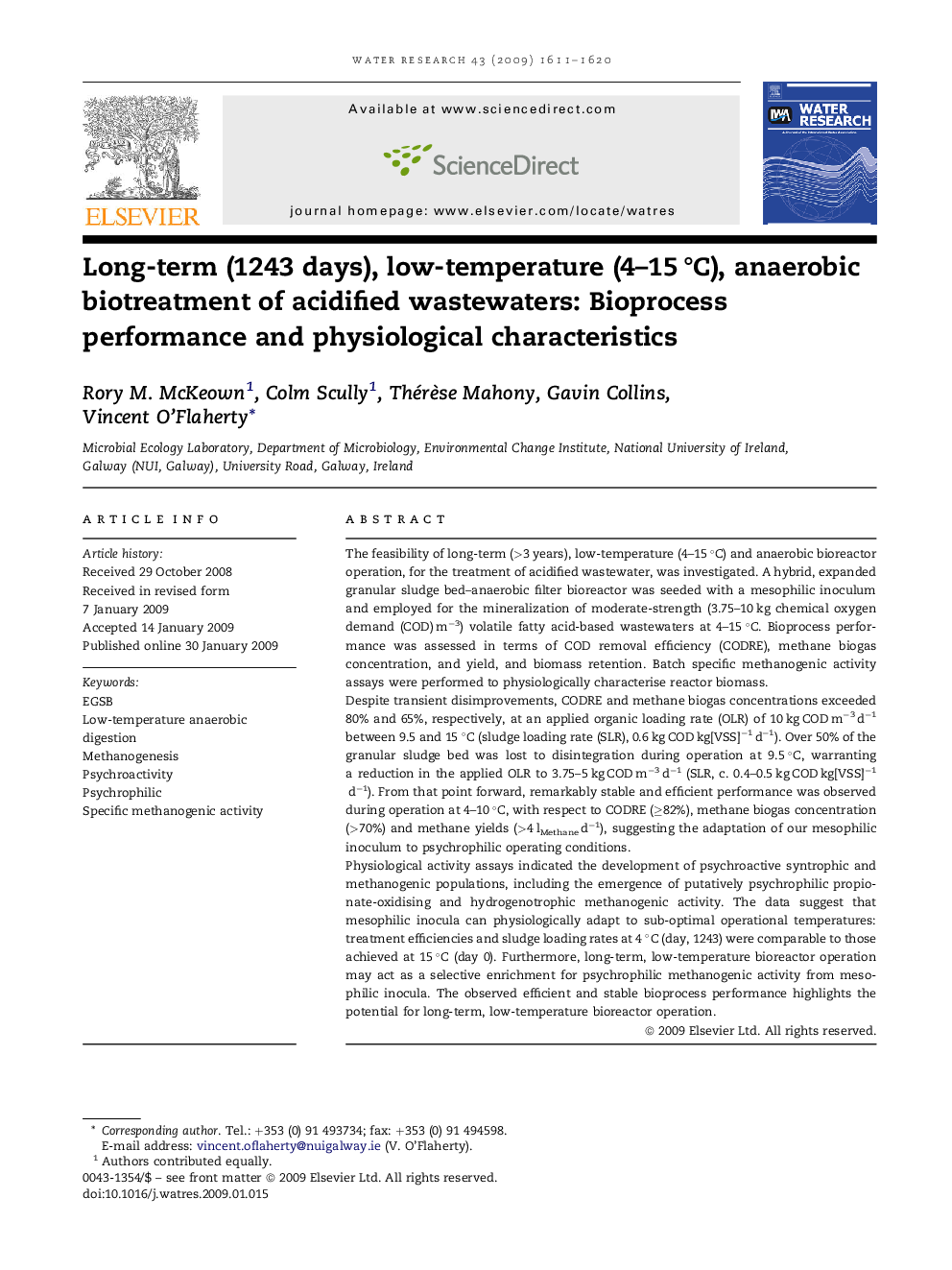| کد مقاله | کد نشریه | سال انتشار | مقاله انگلیسی | نسخه تمام متن |
|---|---|---|---|---|
| 4485145 | 1316942 | 2009 | 10 صفحه PDF | دانلود رایگان |

The feasibility of long-term (>3 years), low-temperature (4–15 °C) and anaerobic bioreactor operation, for the treatment of acidified wastewater, was investigated. A hybrid, expanded granular sludge bed–anaerobic filter bioreactor was seeded with a mesophilic inoculum and employed for the mineralization of moderate-strength (3.75–10 kg chemical oxygen demand (COD) m−3) volatile fatty acid-based wastewaters at 4–15 °C. Bioprocess performance was assessed in terms of COD removal efficiency (CODRE), methane biogas concentration, and yield, and biomass retention. Batch specific methanogenic activity assays were performed to physiologically characterise reactor biomass.Despite transient disimprovements, CODRE and methane biogas concentrations exceeded 80% and 65%, respectively, at an applied organic loading rate (OLR) of 10 kg COD m−3 d−1 between 9.5 and 15 °C (sludge loading rate (SLR), 0.6 kg COD kg[VSS]−1 d−1). Over 50% of the granular sludge bed was lost to disintegration during operation at 9.5 °C, warranting a reduction in the applied OLR to 3.75–5 kg COD m−3 d−1 (SLR, c. 0.4–0.5 kg COD kg[VSS]−1 d−1). From that point forward, remarkably stable and efficient performance was observed during operation at 4–10 °C, with respect to CODRE (≥82%), methane biogas concentration (>70%) and methane yields (>4 lMethane d−1), suggesting the adaptation of our mesophilic inoculum to psychrophilic operating conditions.Physiological activity assays indicated the development of psychroactive syntrophic and methanogenic populations, including the emergence of putatively psychrophilic propionate-oxidising and hydrogenotrophic methanogenic activity. The data suggest that mesophilic inocula can physiologically adapt to sub-optimal operational temperatures: treatment efficiencies and sludge loading rates at 4 °C (day, 1243) were comparable to those achieved at 15 °C (day 0). Furthermore, long-term, low-temperature bioreactor operation may act as a selective enrichment for psychrophilic methanogenic activity from mesophilic inocula. The observed efficient and stable bioprocess performance highlights the potential for long-term, low-temperature bioreactor operation.
Journal: Water Research - Volume 43, Issue 6, April 2009, Pages 1611–1620